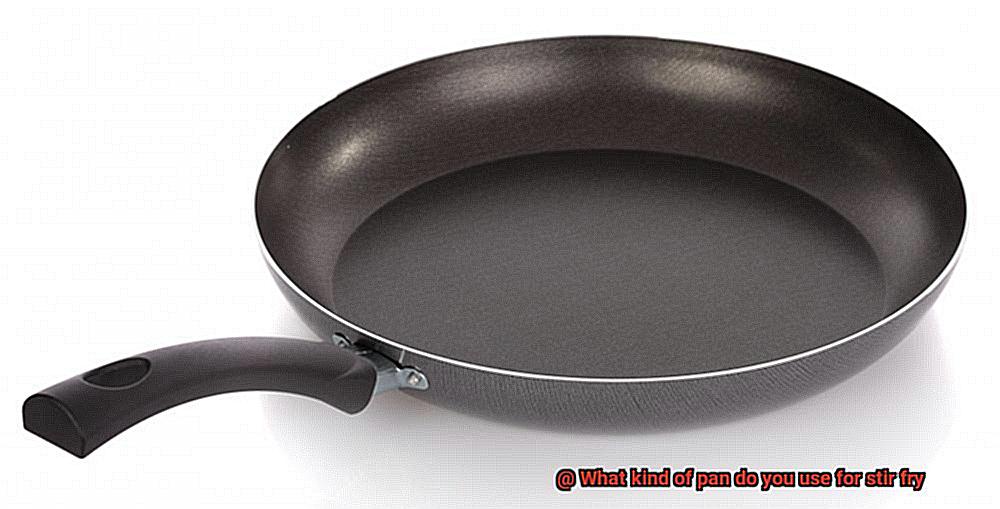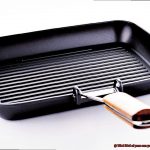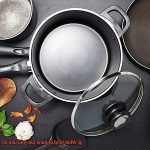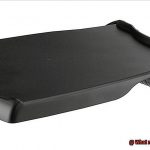Stir-frying is a cooking technique that’s as old as time, and it’s no surprise that it has become a favorite in many households worldwide. It’s quick, efficient, and perfect for those busy weeknights when you need to whip up something delicious in a jiffy. But what makes stir-frying so unique? It’s all about the pan.
The right pan for stir-frying can make or break your dish. That’s why it’s essential to know what kind of pan do you use for stir fry. With so many options available in the market today, choosing the right one can be overwhelming.
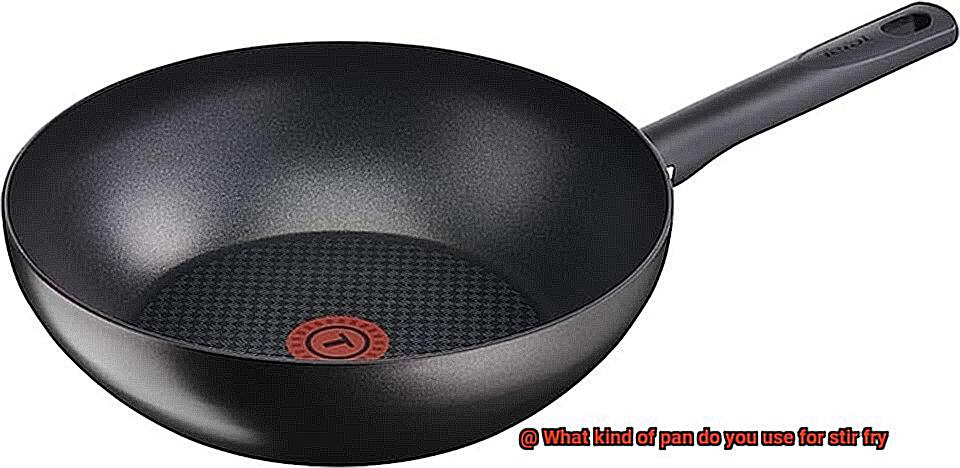
There are different types of pans to choose from, such as stainless steel, cast iron, non-stick, and wok. Each type has its own set of pros and cons. Some work better for certain types of stir-fry dishes, while others have universal applications.
In this article, we’ll take a closer look at each type of pan and what makes it perfect for stir-frying. We’ll discuss their features and give you tips on how to choose the right one for your needs. By the end of this article, you’ll be an expert on selecting the perfect pan for your next stir-fry adventure.
Contents
The Best Pan for Stir-Frying: The Wok
This traditional Chinese cooking tool boasts a unique round-bottomed shape that is perfect for tossing ingredients quickly and evenly. But what makes the wok so special?
Firstly, the material of the wok is crucial. The most popular choice is carbon steel, which rapidly heats up and distributes heat evenly. Cast iron and stainless steel are also options, but they may not heat up as quickly or evenly as carbon steel. Non-stick woks may be tempting, but they may not be as long-lasting.
The size of your wok also matters. Woks come in various sizes to suit your needs, from small individual serving woks to large family-sized woks. Consider how many people you are cooking for and the amount of food you plan to prepare.
The handle of your wok is another important factor to consider. Some woks have two loop handles, while others have a long handle and a small loop handle on the opposite side. The type of handle you choose will depend on your preference and how you plan to use the wok.
When it comes to the shape of the wok, there are two options: traditional and flat-bottomed. Traditional woks are round-bottomed and require a wok ring to remain stable on a stovetop. Flat-bottomed woks can be used on any kind of stovetop without a wok ring, making them more practical for those with electric or induction stovetops.
Different Types of Woks
Woks are the go-to pan for stir-frying, and for a good reason. Their unique shape allows for even heating, easy tossing of ingredients, and quick cooking. However, not all woks are created equal. There are different types of woks available, each with its features and benefits. In this article, we will explore the different types of woks and what makes them stand out.
Traditional Round-Bottomed Woks:
The traditional round-bottomed wok is the most common type of wok. They are made of carbon steel, which is durable and heats up quickly and evenly. These woks require a wok ring to keep them stable on a stovetop. They are affordable and can last for years when properly seasoned. The round-bottomed shape allows for easy stirring and tossing of ingredients.
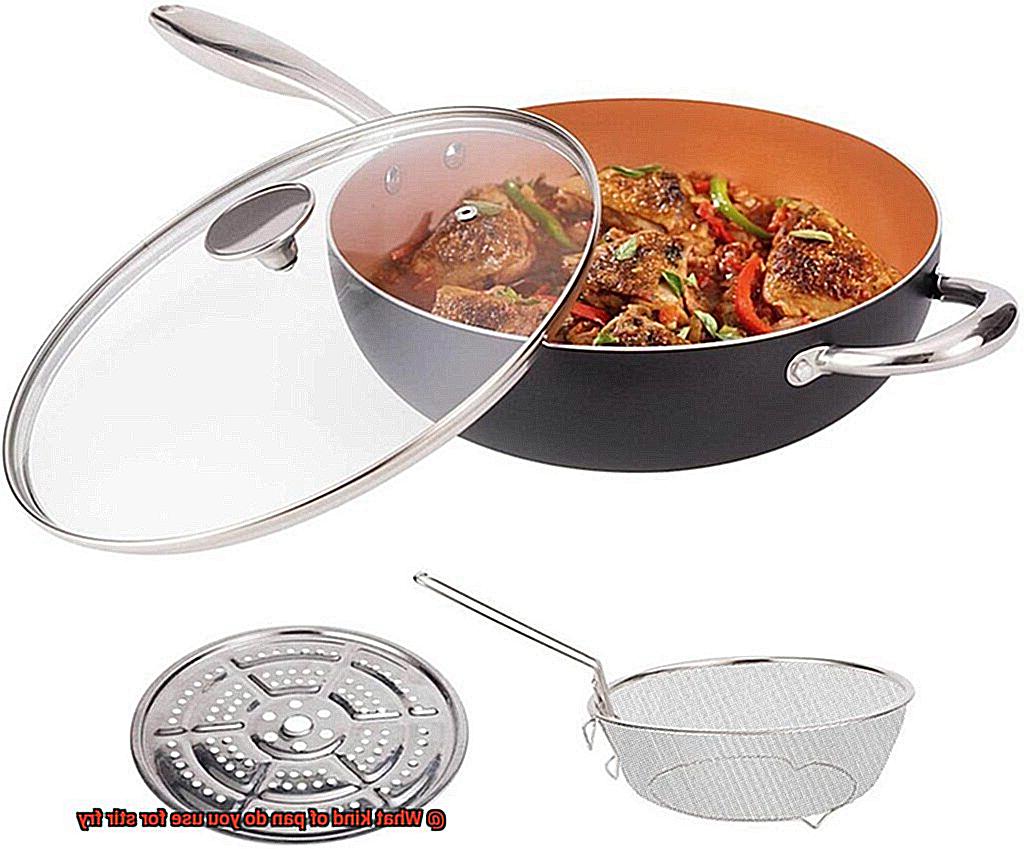
Flat-Bottomed Woks:
Flat-bottomed woks have become popular in recent years as they can be used on any kind of stovetop without a wok ring. They may not provide the same level of heat distribution as round-bottomed ones, but they still work great for stir-frying. Flat-bottomed woks are excellent for those who have electric or induction stovetops.
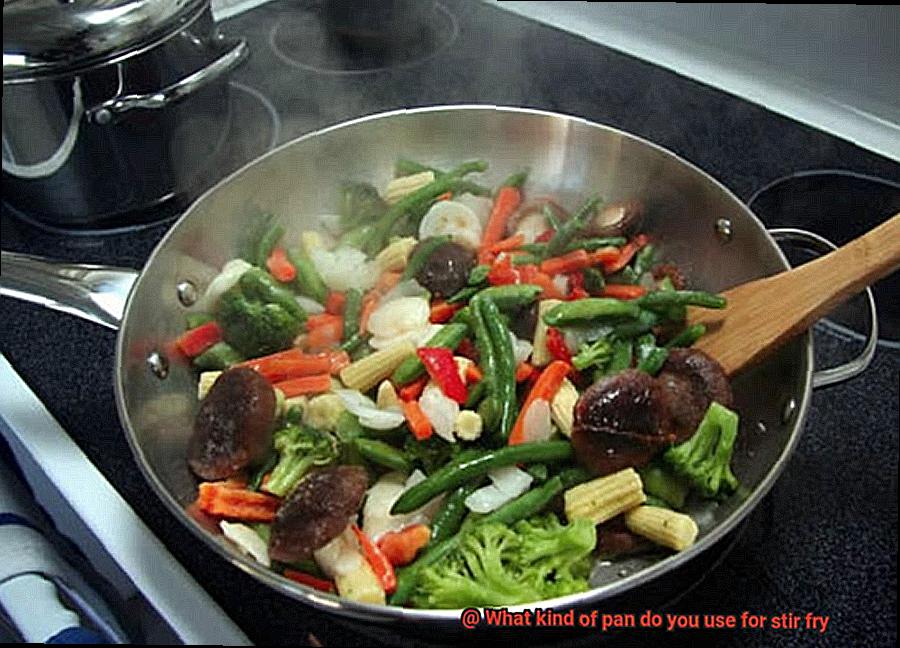
Nonstick Woks:
Nonstick woks are perfect for those who prefer low-fat cooking as they eliminate the need for oil or fat when cooking. They are usually made of aluminum or stainless steel but can be coated with a nonstick material such as Teflon. Nonstick woks are easy to clean, but they may not be as durable as other materials.
Electric Woks:
Electric woks are a more portable option and an excellent choice for those who don’t have access to a stove. They come with temperature control settings, allowing you to adjust the heat according to your preference. Electric woks are easy to use and set up anywhere with an electrical outlet.
Cast Iron Woks:
Cast iron woks are heavy-duty and can retain heat well, making them perfect for high heat cooking. They require seasoning like carbon steel woks but are more durable and can last a lifetime. However, they are also more expensive and require more maintenance than other types of woks.
Specialized Woks:
There are also specialized woks available for specific types of stir-fry cooking. For example, a clay pot wok is used for slow-cooking stews and soups, while a spider wok has a mesh basket that can be used for deep-frying.
Benefits of Using a Wok for Stir-Frying
As an expert in the field, I can attest to the many benefits of using a wok for stir-frying.
Firstly, let’s talk about the shape. The high, sloping sides of a wok make tossing and stirring ingredients effortless. You no longer have to worry about your veggies falling out of the pan or struggling to flip them over. Additionally, the wide surface area ensures that your ingredients are cooked quickly and evenly, resulting in a perfectly cooked stir-fry every time.
But the benefits don’t stop there. Woks are incredibly versatile and can be used for a variety of cooking techniques beyond just stir-frying, including deep-frying and steaming. This makes it a great investment for any home cook looking to diversify their cooking abilities.
Moreover, woks are made from materials such as carbon steel or cast iron that can withstand high temperatures and last for years, making them a durable kitchen tool. You won’t have to worry about replacing your wok anytime soon.
And let’s not forget about the aesthetic appeal. The unique shape of a wok allows for beautiful presentation of your ingredients, making mealtime even more exciting. Plus, serving your stir-fry straight from the pan adds an element of authenticity and tradition to your dining experience.
Materials Used to Make a Wok
With so many options available, it can be overwhelming to understand the pros and cons of each material. That’s why I’m here to guide you through the different materials used to make a wok and help you make an informed decision.
Let’s start with the traditional materials – cast iron and carbon steel woks. These materials are known for their durability and excellent heat conductivity. Cast iron woks are heavy, which means they take longer to heat up, but they retain heat better and are more durable than other materials. Carbon steel woks, on the other hand, are lighter and heat up faster than cast iron woks. They are also less prone to rusting and easier to maintain. So, if you’re looking for a classic option that will last you a long time, cast iron or carbon steel woks are your best bet.
But if you’re looking for a more modern option, stainless steel woks might be just what you need. While not as popular as cast iron or carbon steel, stainless steel woks are extremely durable and easy to clean. However, they take longer to heat up and distribute heat evenly due to their poor heat conductivity.
Non-stick woks have gained popularity in recent years due to their convenience and ease of use. The non-stick coating prevents food from sticking to the pan, which is ideal for stir-frying delicate ingredients like fish and vegetables. However, non-stick coatings can scratch easily and may release harmful fumes when heated at high temperatures. So while they offer convenience, they may not be the healthiest option for your cooking needs.
Ceramic woks offer a unique option for those who want a non-reactive material that won’t interact with acidic ingredients like tomatoes or vinegar. They are easy to clean and don’t require seasoning like cast iron or carbon steel woks. However, they are not as durable as other materials and can crack or chip easily. So if you’re looking for something that’s easy to clean and perfect for cooking acidic dishes, ceramic woks might be the way to go.
Choosing the Right Wok for Your Needs
As an expert in this field, I’m here to guide you through the factors to consider when selecting the ultimate wok for your kitchen.
Let’s start with materials. A traditional carbon steel wok heats up quickly, is lightweight, and durable. However, it requires seasoning and proper care to avoid rust. Stainless steel woks are a good alternative as they are easy to clean and don’t require seasoning, but may not heat up as fast as carbon steel. For those who want to reduce oil usage, a non-stick wok is an excellent option. However, it may not be suitable for high-heat cooking and can wear off over time.
Now onto size. A 14-inch wok is a great starting point for most home cooks and can stir-fry for four people. But if you have a larger family or frequently entertain guests, a bigger wok may be necessary to accommodate larger portions.
Lastly, let’s talk handles. Traditional Chinese-style woks have two small handles on either side, while modern options may feature one long handle or two side handles. Choose a handle that feels comfortable and secure in your hand.
Tips for Cooking with a Wok
A wok is the traditional and preferred method for stir-frying due to its even and quick cooking abilities, as well as its easy tossing and stirring capabilities without spillage. Here are five essential tips for cooking with a wok:
Season Your Wok
Before using your wok for the first time, season it properly to prevent food from sticking to the surface. This process involves heating up your wok over high heat until it starts to smoke, then wiping the surface with an oiled paper towel.
Use High Heat
The key to successful stir-frying is using high heat. High heat allows for quick cooking and prevents ingredients from getting soggy or overcooked. Ensure that your wok is heated up before adding any ingredients.
Cut Ingredients Evenly
To ensure even cooking, make sure all your ingredients are cut into similar sizes. This will ensure they cook at the same rate, preventing some pieces from being overcooked while others are undercooked.
Add Ingredients in Stages
Start by stir-frying the ingredients that take longer to cook, such as meat or root vegetables, before adding quicker-cooking ingredients like leafy greens or mushrooms.
Don’t Overcrowd the Pan
Overcrowding your wok will cause the temperature to drop, leading to improper cooking. Make sure there is enough space between ingredients so that they can cook evenly.
Cleaning and Maintaining Your Wok
First things first, let’s talk about cast iron woks. These heavy-duty woks are great at retaining heat and distributing it evenly, but they require a bit more care than other types. When it comes to cleaning, avoid using soap as it can strip away the seasoning that gives the wok its non-stick properties. Instead, use hot water and a stiff brush to scrub away any food debris. Once cleaned, make sure to dry the wok thoroughly and apply a thin layer of oil or fat to prevent rusting.
Moving on to carbon steel woks, which require seasoning before their first use. To clean them, use hot water and a soft sponge or cloth to avoid scratches. Make sure to dry the wok thoroughly after cleaning and apply a thin layer of oil to prevent rusting. Re-seasoning periodically will help keep your carbon steel wok in top condition.
Lastly, stainless steel woks are the easiest to clean as they don’t require seasoning. Soap and hot water can be used for cleaning, but avoid using abrasive cleaners or scouring pads that can scratch the surface. After cleaning, ensure that the wok is dried thoroughly to prevent water spots.
But wait, there’s more. No matter what type of wok you own, there are a few things to keep in mind for proper maintenance. Avoid soaking your wok in water for an extended period as this can cause rusting or discoloration. Store your wok in a cool, dry place to prevent moisture buildup.
Common Mistakes to Avoid When Stir-Frying with a Wok
It could be that you’re making some common mistakes when using your wok. As an expert in this area, I’ve compiled a list of the four most common mistakes to avoid when stir-frying with a wok.
Firstly, using the wrong type of wok is a big mistake. Non-stick woks are not recommended for stir-frying as they don’t get hot enough and can cause food to stick. Instead, opt for a carbon steel or cast iron wok that conducts heat well. These materials can handle high temperatures and distribute heat evenly, ensuring that your stir-fry is cooked to perfection.
The second mistake people often make is overcrowding the pan. If you want evenly cooked ingredients, give each one enough space to breathe. Overcrowding the pan will result in uneven cooking and can also cause the ingredients to steam rather than fry. So, make sure to cook in batches if necessary.
Not preheating your wok is another rookie error. Preheating the wok helps to prevent food from sticking, so make sure to heat it over high heat for several minutes before adding any oil or ingredients. This process ensures that your wok is ready to go and reduces the risk of sticking.
Lastly, many people make the mistake of adding too much oil. While it may be tempting to add more oil, this can lead to greasy and soggy food. Use only a small amount of oil and add more as needed. This will help keep your stir-fry light and healthy without sacrificing flavor.
0DT2Rtt65P0″ >
Conclusion
To achieve the perfect stir-fry, you need the right tool for the job. And when it comes to pans, nothing beats a good wok. Its unique shape and material make it ideal for quick and even cooking, easy tossing of ingredients, and versatility in various cooking techniques. But not all woks are created equal.
When choosing a wok, you should consider factors such as material, size, and handle type. Traditional round-bottomed woks made of carbon steel are the most popular choice due to their durability and heat conductivity. However, flat-bottomed woks are also excellent options for those with electric or induction stovetops.
But having the right pan is only half the battle. You also need to know how to maintain it properly to ensure its longevity and effectiveness. For instance, avoid using soap on cast iron or carbon steel woks and dry them thoroughly after cleaning to prevent rusting. Stainless steel woks are easier to clean but require proper storage to avoid water spots.
And when it’s time to cook, remember to avoid common mistakes such as using the wrong type of pan, overcrowding the pan, not preheating it properly, and adding too much oil. By following these tips and tricks for choosing, maintaining, and cooking with a wok, you’ll be able to whip up delicious stir-fry dishes in no time.

